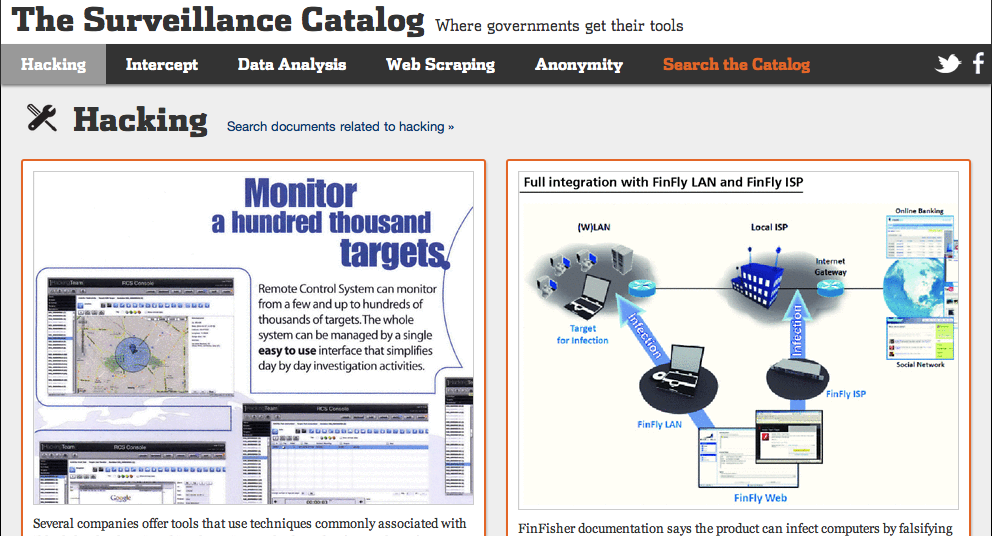This fall, The Wall Street Journal obtained a set of documents from a secretive trade show for surveillance and intelligence tech. The marketing materials reveal an industry that has grown rapidly in the past 10 years to supply the increasing demand from governments.
In addition to the usual articles in print and online, we wanted to give readers a chance to see the documents themselves. To do this, my fellow online journalists Zach Seward and Jeremy Singer-Vine suggested a service called DocumentCloud — part of Investigative Reporters and Editors, a nonprofit organization dedicated to investigative journalism. DocumentCloud lets journalists upload documents, annotate and categorize them and then use them in interactive graphics and the like. Documents are automatically run through an “optical character recognition” system, so they’re easily searched. Readers can view the journalists’ notes or download the original document as well.
As a new user of the system, I found DocumentCloud to be slick and incredibly easy to use. We couldn’t have completed our project so quickly without this tool. There are, however, a few things I’d love to see, including the ability to categorize annotations. This sort of finer control would allow readers to see only annotations related to glossary definitions of words, for example, or notes that correspond to certain stories. The folks at DocumentCloud are regularly updating the features. If you’re a journalist who regularly uses original source material, you should check it out.




